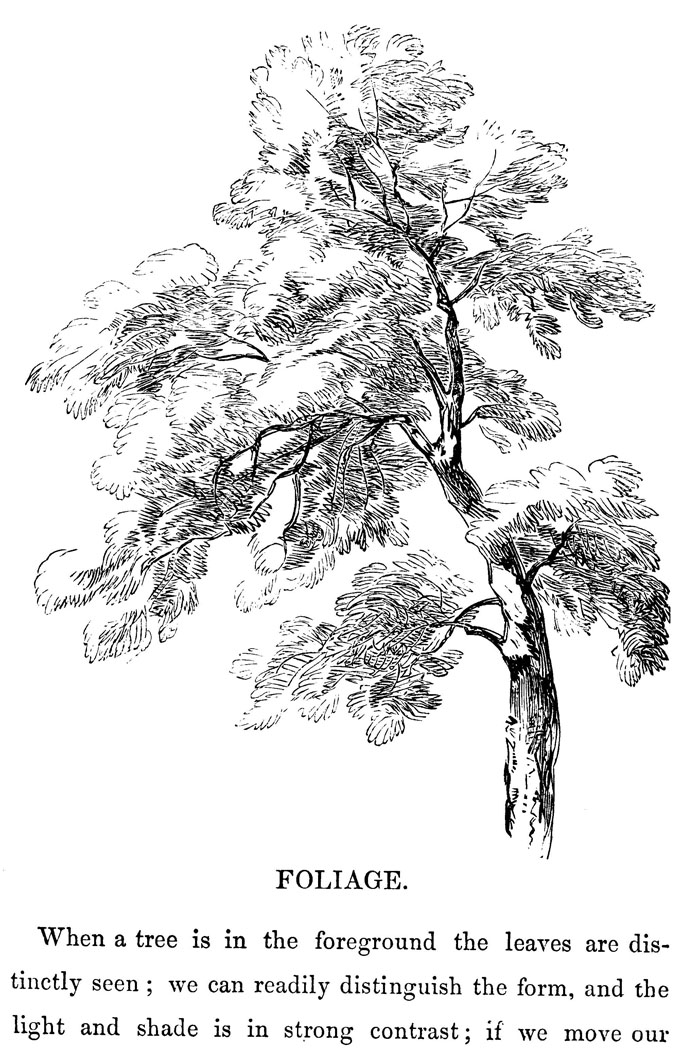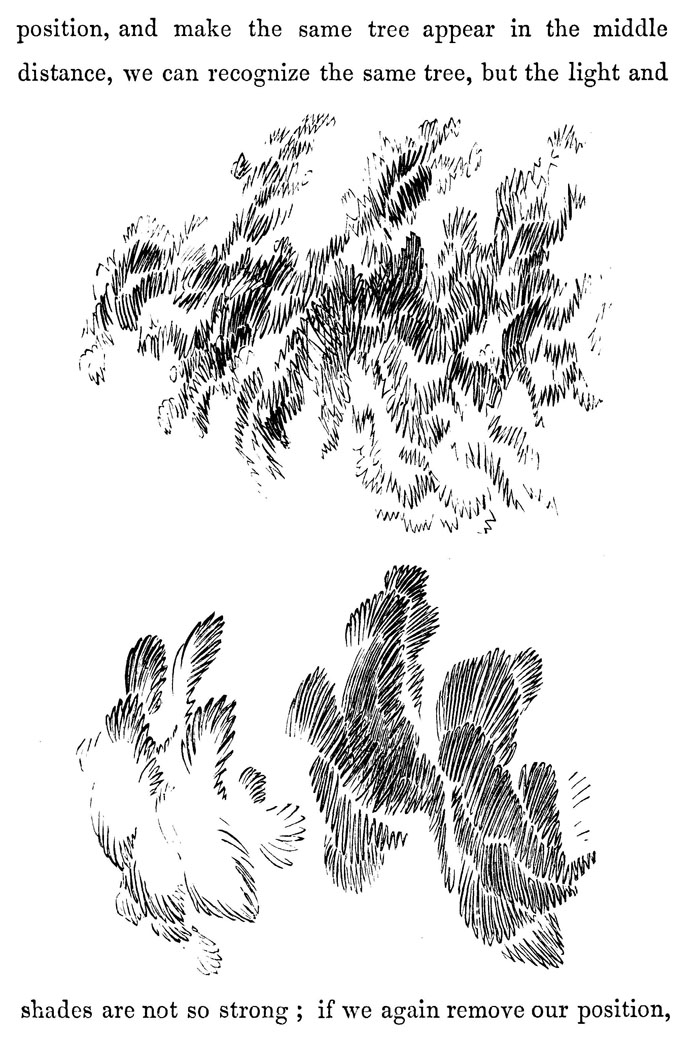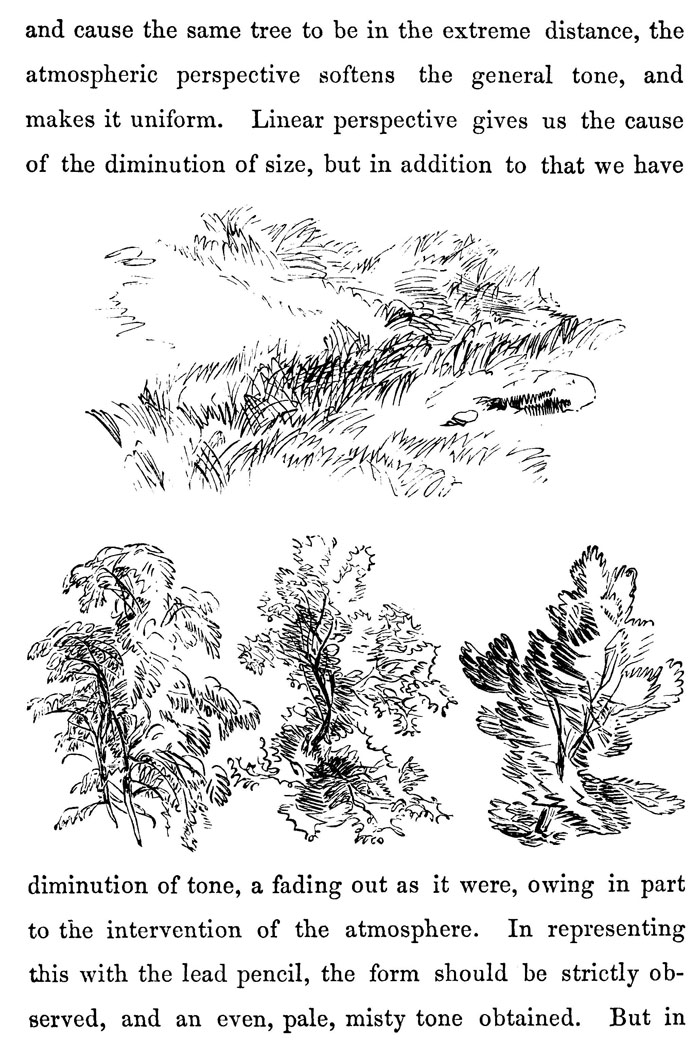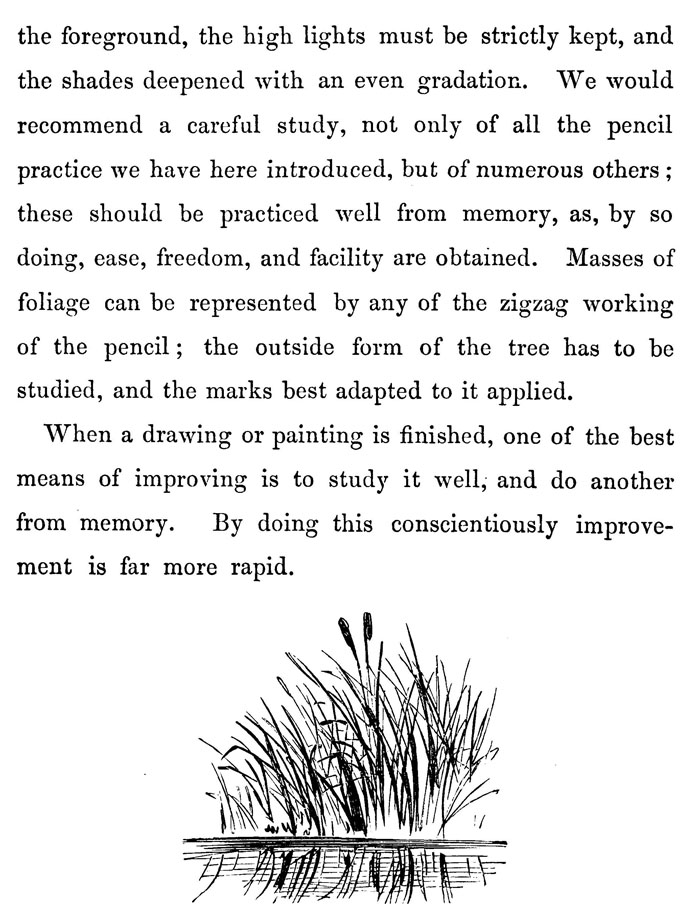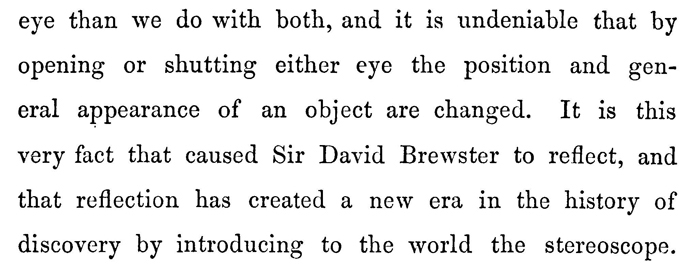Home > Directory of Drawing Lessons >Perspective Drawing > Perspective Drawing Tutorials
How to Draw in Perspective with the Following Drawing Tutorial
|
|
PERSPECTIVE DRAWING.
Perspective is the art of drawing on a plain surface the true representation or appearance of any given object, as it would appear upon a pane of glass when held upright between you and the object.
If a person standing on the sea shore look far away over the expanse of water, he will observe a boundary line — the water apparently meeting with the sky by a well-defined straight line. This is called the horizontal line, and it is exactly opposite the range of the eye ; and that particular point of the horizontal line to which the eye of the sketcher is directed is called the point , of sight. If he ascend to any height on the shore, the line of the horizon must be placed higher in his drawing, -because his eye is so much higher ; and the axiom laid down in the previous paragraph holds true, that the horizontal line is that line exactly on a level with the eye.
Any person looking on a straight road which continues into the extreme distance, may observe that the edges of the road appear to terminate in a point. Perhaps a better illustration of this may be found on the track of a railroad, in a part where it is perfectly straight. The rails, as they recede into the distance, converge until apparently lost in a point, and at the same time appear to rise up, the extreme point being just level, with the eye.
From facts like these Chapman deduces these elementary principles ; that, —
I. The point of sight must be in the center of the perspective picture.
It is not too much to say that strict attention to these principles will produce the most gratifying results in the progress of the learner. One rule the true artist should always remember, that is, never to carry the point of sight outside the picture. The eye naturally seeks a point of view in the picture, and the nearer this point is to the center of the picture, the greater is the harmony between nature and art.
All objects appear to diminish in proportion to their remoteness from the eye of the spectator. Hence columns, posts, trees, etc., of equal height, will appear to diminish as they recede from the eye. The lines which govern their diminution in perspective drawing are called vanishing lines, and if perpendicular to you, vanish in the point of sight, or that point in the horizon exactly opposite your eye as you stand when sketching; if the lines are below the eye, they tend upward, as the rails on the railroad ; but if above you, as the ceiling of a long corridor, they would tend downward towards the horizon.
The point of sight may be fixed at pleasure; and although, strictly speaking, the center is the correct place, it is generally better to place it a little removed from the center of the picture; for if the subject were a street, or an avenue of trees, the perspective would be very formal, and the scene would thereby be diminished in interest.
Many contend that all objects appear better with one than both eyes ; alleging that the sight is rendered more powerful by one eye being shut. Be this as it may, it is certain we see a piece of perspective better with one eye than we do with both, and it is undeniable that by opening or shutting either eye the position and general appearance of an object are changed. It is this very fact that caused Sir David Brewster to reflect, and that reflection has created a new era in the history of discovery by introducing to the world the stereoscope.
|
Privacy Policy ...... Contact Us






